
In this series, Awesome Artists, we talk to our favorite artists to get insight on how they draw, and get their tips for creating. We spoke to Allison Langton, who shared her watercolor techniques with painting plants, and Tim Miller, who gave us a peek into his process for creating the picture book, Snappsy the Alligator. Today we welcome back one of our friends, Colleen Kong-Savage, who was our very first guest for 3 & 1/2 Questions.
Meet Awesome Artist Colleen Kong
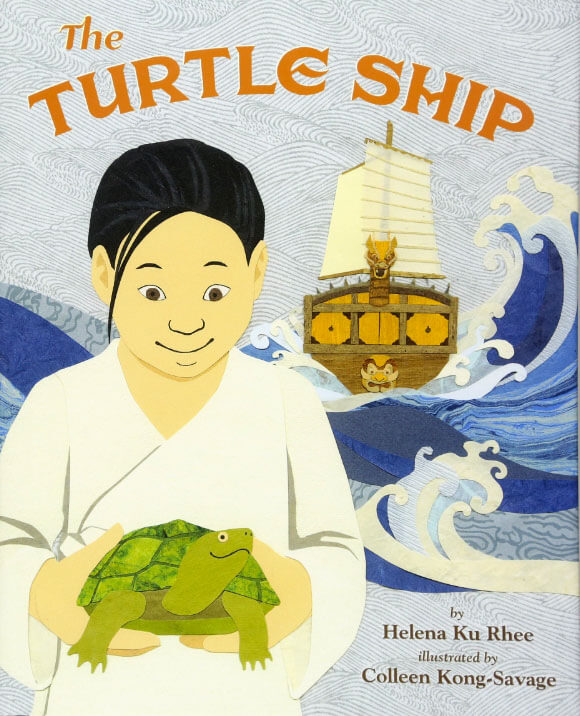
I’m so excited for Colleen as this is her debut as a picture book illustrator. Above is the cover of The Turtle Ship by Helena Ku Rhee, illustrated by Colleen Kong-Savage. Colleen uses a technique called collage – doodling with paper. We’re so excited to share Colleen’s process in drawing with scissors and paper.
The Turtle Ship is a story about a poor boy named Sun-sin who dreams of traveling the world. One day a contest is announced that the winner of best ship design would get to sail with the royal navy. Sun-sin’s idea for a ship is inspired by his best friend, a turtle called Gobugi (which means “turtle” in Korean).
Colleen is going to share with us one of the most difficult scenes she worked on for the book, as seen below.
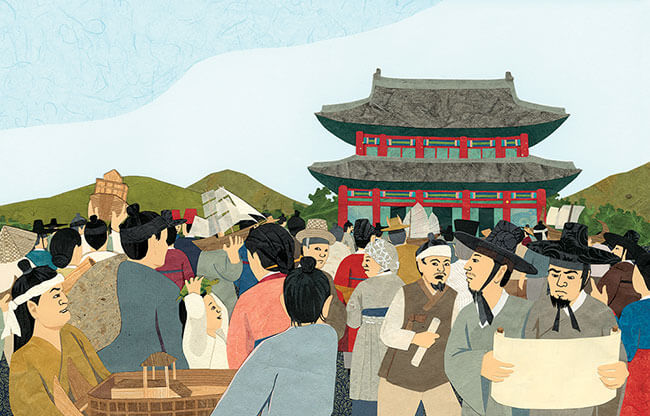
KCD: Hi Colleen. Thanks for stopping by and sharing your work with us! Can you tell us a little bit about this scene from the book?
CKS: For this scene, I wanted show the Gyeongbokgung Palace, which was the grandest of all the palaces built in the Joseon Dynasty, the period in which Sunsin lived. So I did a sketch to show the art director how I planned to illustrate this scene. It was rough, messy, and fast because the purpose of the sketch was to show the Art Director my idea.
The Art Director said, “We like the expressions of people wondering why a kid is there with a turtle. It’s cute the way you have him holding the turtle on his head. We suggest backing out in space so we can see many more of the “hundreds of people.” Right now it looks like there are only six other people.”
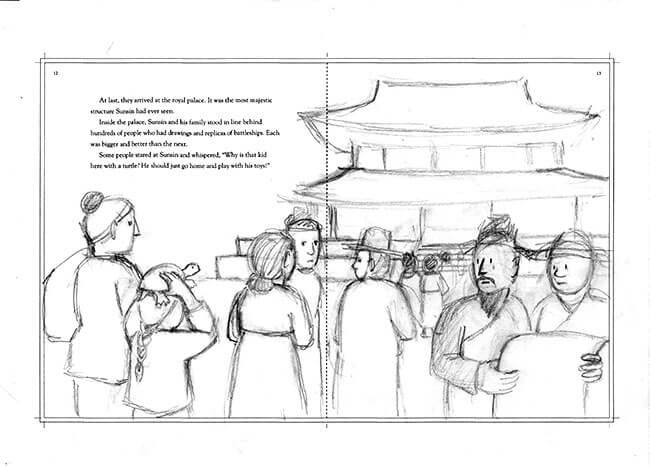
 Note that Colleen shows a sketch before starting a final drawing. The above is the first one she showed, and she does a few more before it gets approved to proceed to final draft.
Note that Colleen shows a sketch before starting a final drawing. The above is the first one she showed, and she does a few more before it gets approved to proceed to final draft.
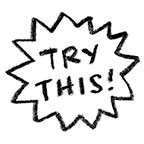 Before doing a drawing, see how many ways you can sketch the drawing. Trying different viewpoints or changing something about the subject or try different ideas.
Before doing a drawing, see how many ways you can sketch the drawing. Trying different viewpoints or changing something about the subject or try different ideas.
KCD: How did you react to the Art Director’s feedback?
CKS: I don’t know if you ever noticed — drawing people is not easy, not even for a professional artist. But the Art Director was right, I hadn’t drawn very many people, so I sketched some more.
“How’s this?” I asked the Art Director.
She said, “This is a little better with a few more people added, but we still don’t get a sense of hundreds, and nobody has a replica of a battleship.”
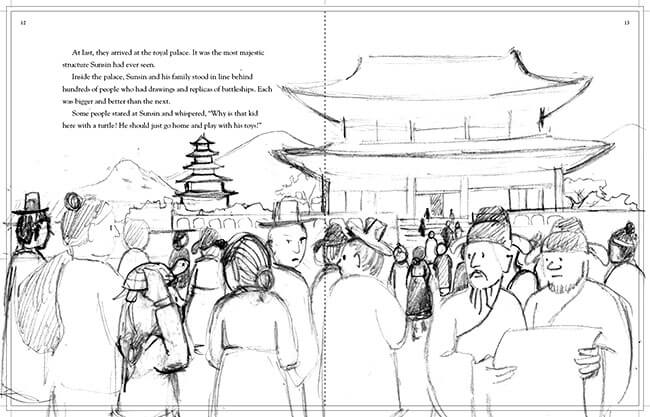
Argh! Drawing a crowd is a lot of work! You have to make up many different faces, and many different bodies doing different activities, wearing different clothes, in different positions from the viewer’s point of view. Plus as a collage artist I was imagining all the like tiny bits of paper I’d be cutting out in the final illustration. And oh yeah, I had forgotten about the replicas.
“How about this?” I asked the Art Director. “Is this enough people and battleships? And do you like how you can see Sun-sin’s face now? I want people to see that he’s excited to be here.”
Thankfully, the Art Director said, “YES!”
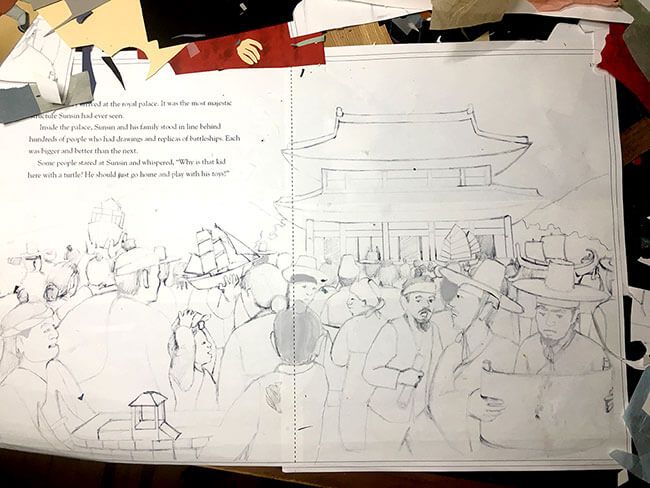
KCD: How do you start drawing with paper?
CKS: I make many copies of this drawing. I use most of them to help me cut out all the individual shapes from the papers I want to use. With the help of a light table I trace facial expressions. And I always keep one copy of the master drawing whole.
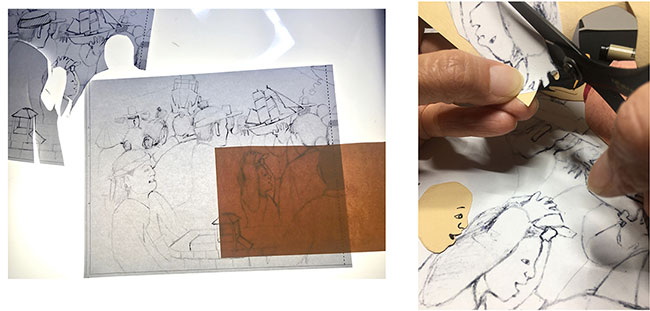
This copy is my template and it helps me figure out where to put the pieces.
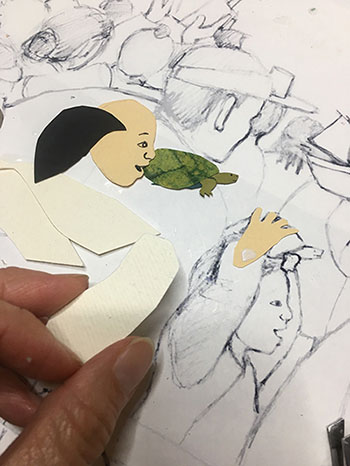
As I put the pieces in place I glue them to each other—not onto the template. I will glue the crowd to another background when it’s complete.
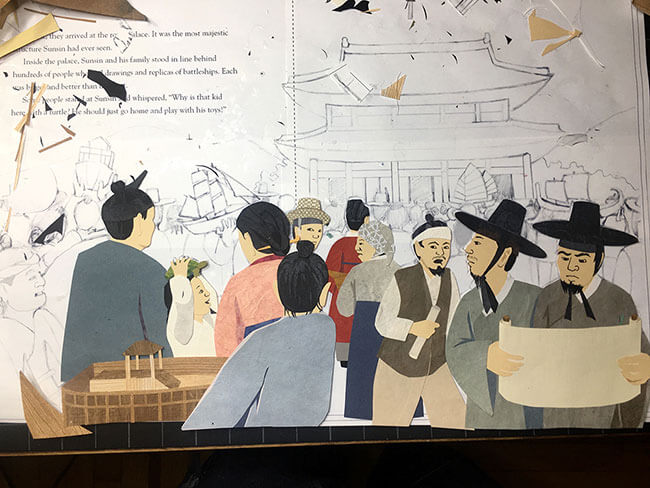
This is what the back of a whole crowd of people look like.
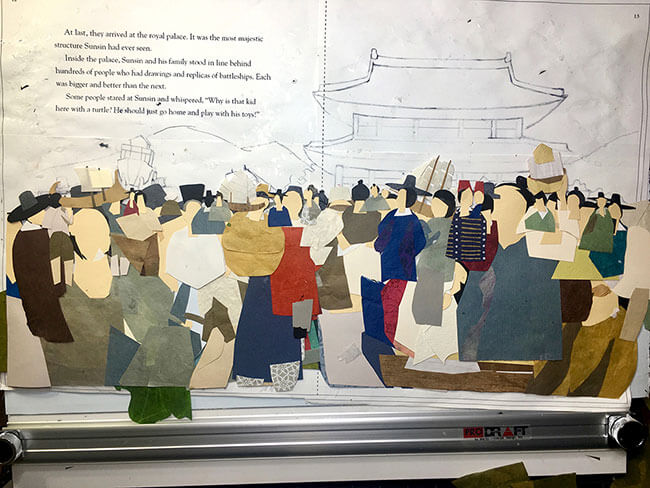
***
Phew! I bet it took a long time to complete pasting all the people and their details. Here is the completed scene again. Thanks for sharing your process with us, Colleen!

 Every professional illustrator sketches ideas first before doing a final piece of art. The final art takes a long time, so it’s important to work out all the details first, and that way, you’ll make all your mistakes in the early draft and not the final art.
Every professional illustrator sketches ideas first before doing a final piece of art. The final art takes a long time, so it’s important to work out all the details first, and that way, you’ll make all your mistakes in the early draft and not the final art.

Next time when you want to create something, try sketching out a few ideas first. See how many ways you can approach the drawing, trying it in different way each time. Good luck!
***
Colleen Kong-Savage is an illustrator, artist, and graphic designer. Her picture book debut, The Turtle Ship is published by Shen’s Books, a multicultural children’s book publisher based in California. Shen’s Books aims to emphasize “cultural diversity and tolerance, with a focus on introducing children to the cultures of Asia.”
All images courtesy of Colleen Kong-Savage.
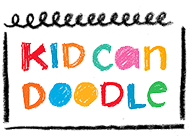



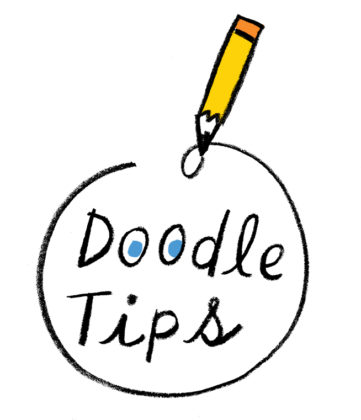























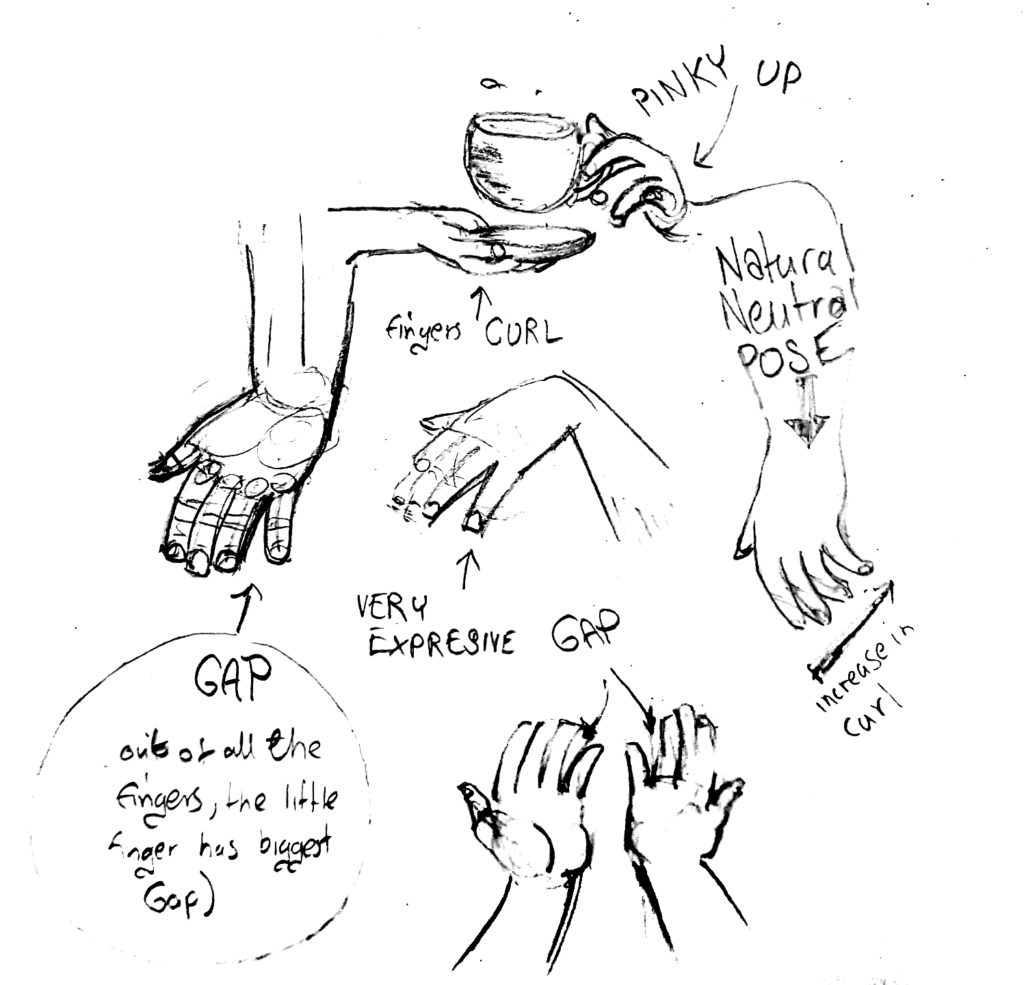





























































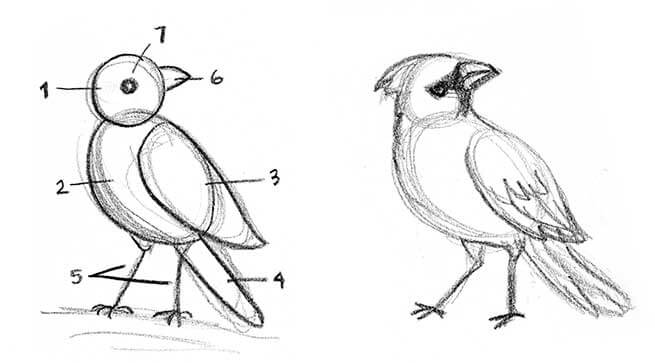

 Can you find the 7 parts in the bird sketches below?
Can you find the 7 parts in the bird sketches below?














